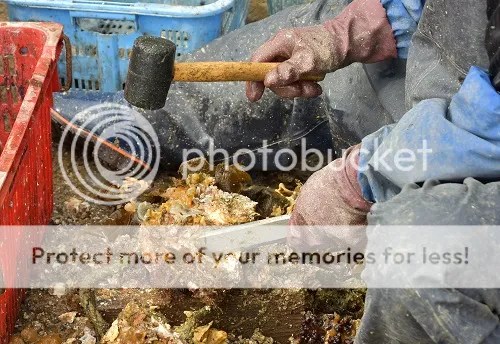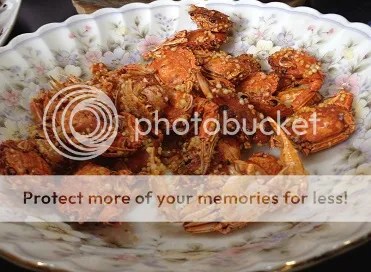…have I never written about shijimi clams?
………how could it be that in over 3.5 years of writing this blog, I have never written about shijimi clams!?
It might be because they are such a ubiquitous part of life in the San’in region–especially the Lake Shinji area–that I take them as given as good rice. Sure, I’ve mentioned them here and there a lot, but I’ve already given Nita rice its own introduction, so it’s about time I do the same for shijimi clams.
…hmm. Where to start?
Best to start where they do: Lake Shinji.
The early morning sight of shijimi clam fishers on Lake Shinji is a familiar and iconic sight from around the central part of Matsue. The lake is home to Japan’s biggest source of yamato shijimi, and there are so many of them acting as a natural filtration system for the brackish water that they can clean the entire lake in three days’ time. Or was it three hours? I forgot, as it was part of a quiz that a proud shijimi fisher gave me one time when he very enthusiastically shared a lot of clammy trivia with us. To illustrate how fast they work, he said, they have a tank of them near the boarding point for the Hakucho boat tour of Lake Shinji, and before departing they pour a bunch of cloudy, dirty water in, and by the time the passengers get back, they get to see that the water has already turned clear thanks to the hardworking clams.
The hardworking, tasty clams.
Miso soup is a standard part of the Japanese diet, pairing well with almost any kind of Japanese food, and there are limitless in the ways you could prepare it. Here in the Lake Shinji area, that means shijimi soup. There’s no question about it, really. If you go to a fancy restaurant in Matsue or Izumo or Unnan or Yasugi, you’re getting shijimi soup near the end of your multi-course meal of local delicacies. If you go to a more home-style place with a lunch set or dinner set, you’re getting shijimi soup as part of it. If you’re staying over at a friend’s place and they bother cooking Japanese style, you’re getting shijimi soup with dinner and breakfast the next morning. More likely than not, these will all be filled with lots and lots and lots and lots of these little creatures.
Are there other ways to eat shijimi clams, besides in soup? Sure, but I think the only other ways I’ve eaten them were when they were cooked into rice (delicious), and when I prepared them with pasta after I won a huge bag of them and didn’t feel like making soup with them. And yes, it can take some time to get each of them out of the shells with either a pair of chopsticks and some talent or with your tongue and teeth. After so much practice now, though, I don’t usually consider it a struggle. After all, I’ve probably eaten hundreds of these things by now.
Whenever anyone introduces this local specialty product to you, they usually mention–perhaps more than once–how good they are for your liver. Hence, they give people a good excuse to break out the sake with their meals.
If you have a passion for these tiny mollusks you can find out more at Shijimikan, the Shijimi clam center nestled among the ryokan of Matsue Shinjiko Onsen, lining the northeast bank of the lake. I don’t know what you’d find there, though. I haven’t been. Maybe shijimi-flavored ice cream? Actually, now that I think of it, I think I have heard of that.
Even though I don’t exactly have a passion for them, I still find the sight of their tiny black shells familiar and endearing. They wash up along the statue-laden shores surround Shimane Art Museum and lonely island Yomegashima, and I’ve even found some in the parking lot of my apartment, possibly dropped there by the large birds of prey surrounding the city life. It’s considered good luck to leave the shells in front of the second hare statue around the museum (no, I have no idea why), and there are a number of accessories made with them as local souvenirs. They have a bit of an En-musubi meaning to them too, because like a perfectly matched couple, the two halves of each shell will only match with each other.


























 After visiting the horses and fishes around Nishinoshima, I headed to the big island of Okinoshima. Among my adventures there was a sea kayaking trip. It wasn’t quite as sunny as when I went
After visiting the horses and fishes around Nishinoshima, I headed to the big island of Okinoshima. Among my adventures there was a sea kayaking trip. It wasn’t quite as sunny as when I went 























